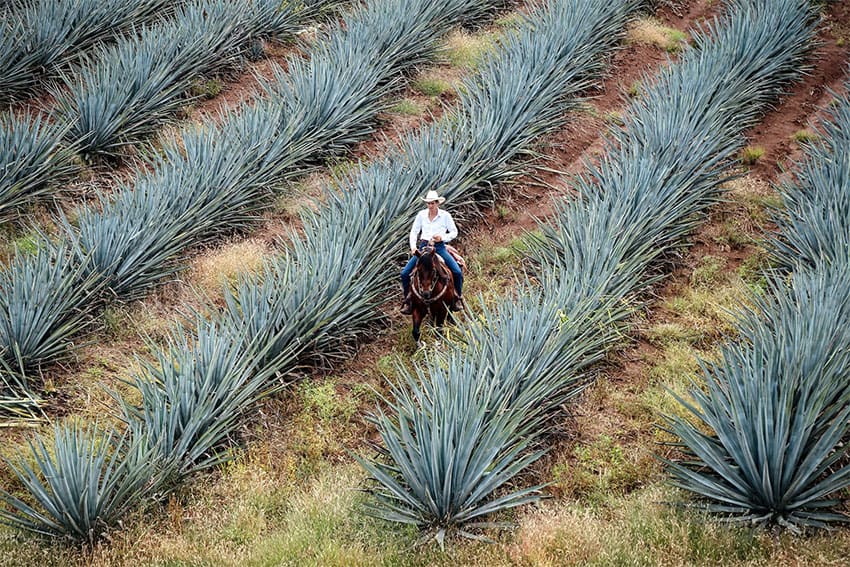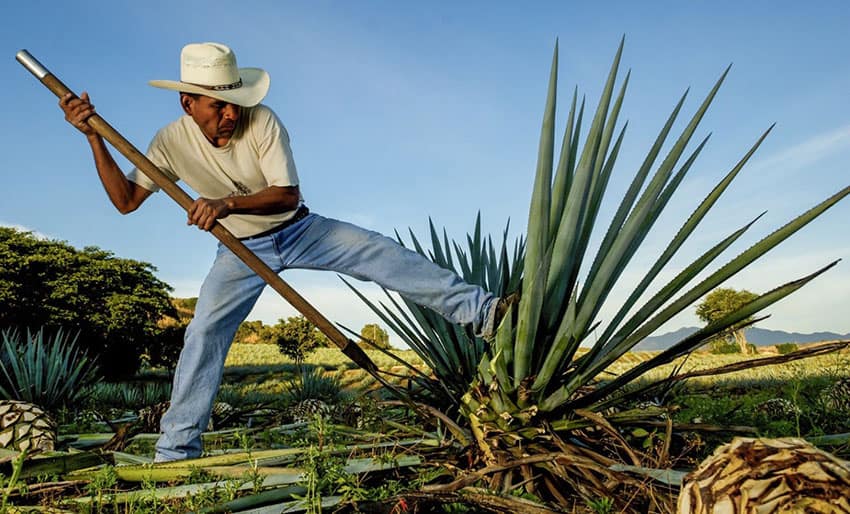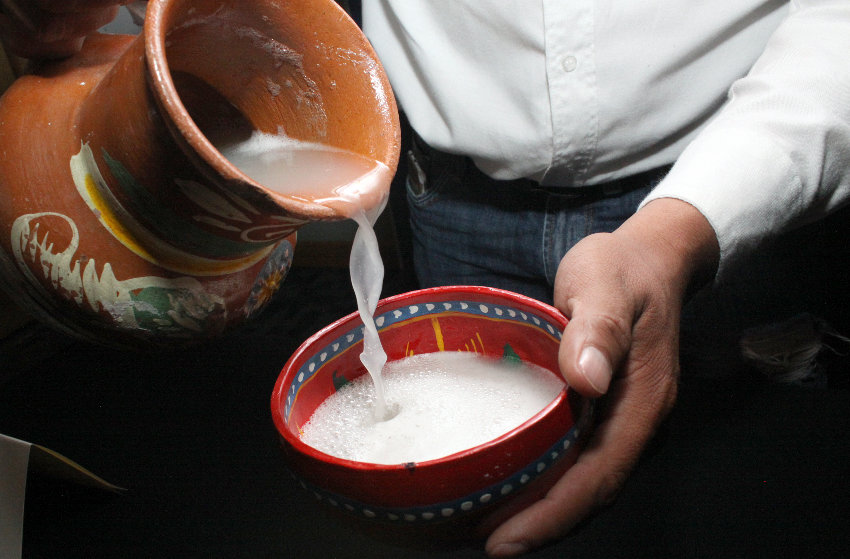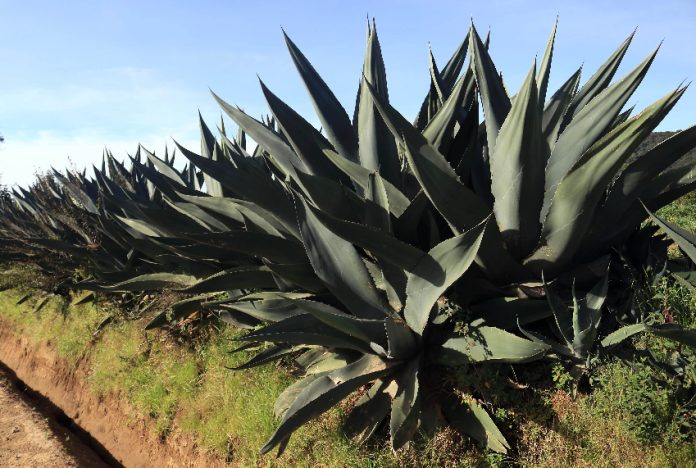Tequila, pulque and mezcal form the golden triptych of Mexican elixirs. What do these three drinks have in common? Agave.
The plant, also known as maguey, that gives origin to these spirits is processed through the ritual of collecting aguamiel, the agave sap. This practice has deep roots in pre-Hispanic times. Stone scrapers used for hollowing out the agave’s core have been found in several archaeological sites in Mesoamerica, some dating back to the year 200 B.C.E.

In addition to fermented drinks, ancient peoples discovered the medicinal properties of agave and its use as a sweetener, after boiling and thickening the liquid into syrup. Furthermore, agave fibers have long been used to produce clothing, footwear, building materials, and paper; and the plant also produces several pounds of edible flowers during its final season.
Sap straight out of the plant, before fermentation, was served as a kind of milk for babies, before cows arrived on the continent. The first cattle were brought to the Americas from the Canary Islands by Christopher Columbus, on his second voyage across the Atlantic in 1493. The agave sap is naturally sweet, and was mixed with corn masa to create a comforting and nourishing porridge called atole.
The aguamiel production process is long and exacting. The agave plant needs 5 to 25 years of maturation before the sap can be extracted. When mature, its thick fleshy leaves are cut off and the liquid found within its hollowed-out core is collected twice a day for about four to twelve months before the plant finally dies. This center is regularly scraped out to keep the plant’s production of sap active during its fruitful phase.
Mezcal can be made from various species of agave, each imparting distinct flavors. Skilled farmers, known as jimadores, harvest the agave by hand and remove the leaves to reveal the piña or core, which can weigh up to several hundred pounds. These are roasted for several days within a rock pit in the ground. This cooking process imparts mezcal’s characteristic smoky flavor.

Once roasted, the piñas are removed from the pit, and crushed or shredded. The resulting fibers and juice are collected into large wooden vats or earthenware pits for fermentation. After fermentation, the liquid is distilled at least twice to increase its alcohol content and purity.
Some types of mezcal are aged in wooden barrels, usually made from oak or other local woods, to further develop their flavors and add complexity. However, not all are aged (reposado), and some producers prefer to showcase the spirit’s natural characteristics without any aging (joven).
All tequila is mezcal, but not all mezcal is tequila. Renowned across the globe, tequila is made exclusively from agave tequilana Weber, a blue agave species. It also differs in process: distillers steam the blue agave piña in a brick oven or autoclave according to strict methodology that leads to a more consistent flavor, and lends itself more easily to industrial production. Tequila was granted a Designation of Origin in 1974, which honors Mexico as the official home of tequila, and requires any drink called tequila to originate in select regions of Jalisco, Guanajuato, Michoacán, Nayarit, and Tamaulipas.

Pulque, which was central to religious rituals of the Mexica, is made by fermenting aguamiel. Mesoamericans permitted nursing women and the elderly to imbibe this drink that was normally reserved exclusively for priests and nobility. Modern analysis of the spirit has found that it contains vitamins C, B-complex, D, and E; and amino acids and minerals.
Pulque is regaining popularity thanks to its unique flavor and purported health benefits. It may improve intestinal flora as a natural probiotic, which can prevent development of harmful bacteria in the intestine.
As we sip and savor these liquid treasures, we immerse ourselves in a story woven through hard work and ancient wisdom. From the mystical agave plant to the hands of skilled artisans, each elixir carries with it the distilled essence of Mexico – a tale of rich flavors, tradition, and the deep-rooted connection between people and the land.
Sandra is a Mexican writer and translator based in San Miguel de Allende who specializes in mental health and humanitarian aid. She believes in the power of language to foster compassion and understanding across cultures. She can be reached at: [email protected]
